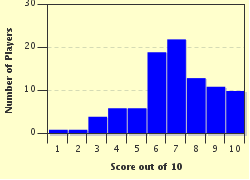Quiz Answer Key and Fun Facts
1. What does the "AM" in AM radio represent?
2. When was the first regular AM radio broadcast?
(Hint: think sometime between the Wright stuff and the Titanic disaster.)
3. What is the AM broadcast frequency range?
4. US AM radio station call signs begin with one of two letters. Which of the below are the correct letters?
5. Why do well over half the AM radio stations go off the air or reduce their signal power at night?
6. The person who selects and plays music for a radio station is called a DJ or "deejay." What does that term actually stand for?
7. When your great-grandparents listened to the radio news about the Hindenburg disaster or the Pearl Harbor attack, what component was NOT inside their AM set?
8. Since we're discussing internal parts, that same old time radio had at LEAST one - and probably more - clear glass tubes filled with "stuff." In the US, these tubes are called "electron tubes" or "vacuum tubes." What do the British and New Zealanders call them?
9. From about 1953 to 1963, all American-made AM radios had small triangles on the frequency dial at 640 and 1240 Khz. What purpose did these marks serve?
10. You've done well, pardner. Draw yourself up to the dairy bar, pour yourself a shot of Ovaltine, and answer one more AM radio question. In the movie "A Christmas Story," Ralphie was a faithful listener of what radio serial adventure?
Source: Author
goatlockerjoe
This quiz was reviewed by FunTrivia editor
kyleisalive before going online.
Any errors found in FunTrivia content are routinely corrected through our feedback system.

